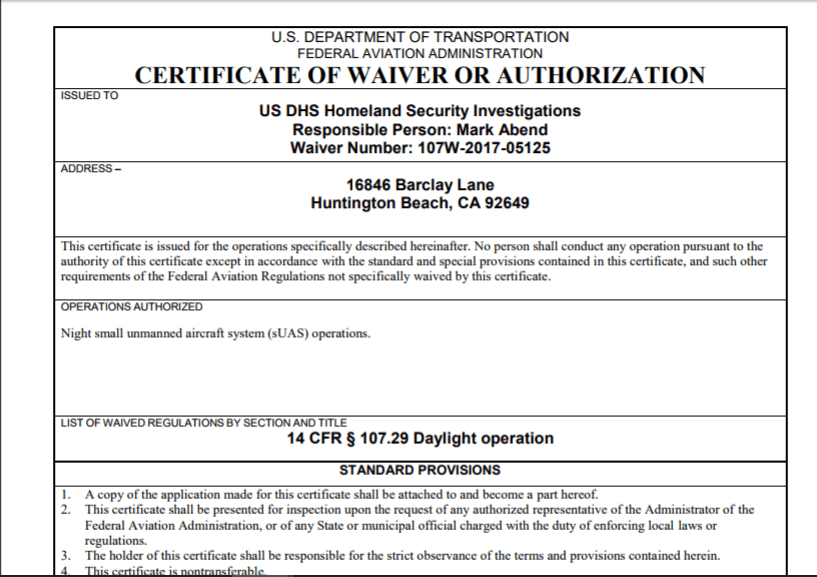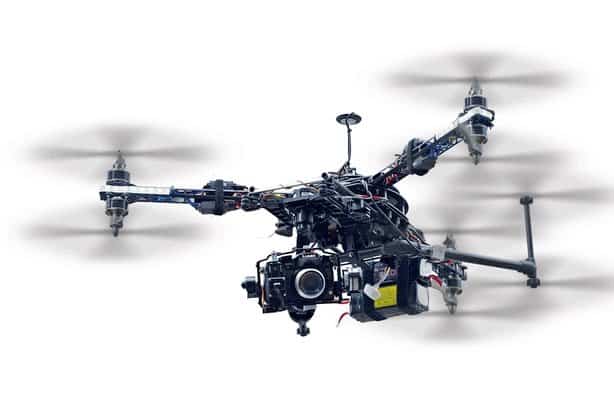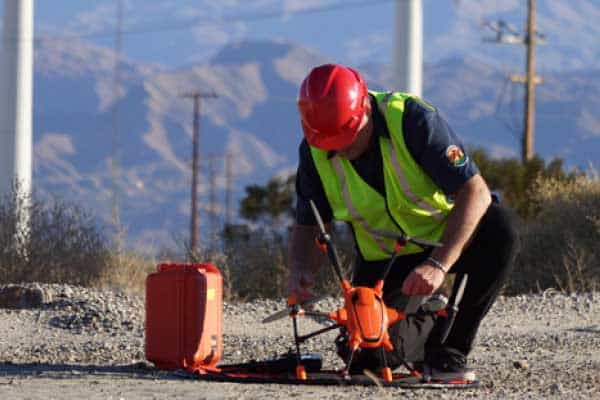The enactment of Part 107 streamlined FAA’s regulations over commercial unmanned aircraft systems (UASs).
The regulations spell out guidelines for commercial drones in the United States. They include requirements to stay under 400 feet altitude, maintaining a line of sight at all times, and flying only in the daylight.
However, the FAA allows companies to apply for waivers to some of these regulations. These waivers can be requested by drones in agriculture, real estate, filming, inspections, law enforcement, and other commercial drones.
Currently, 1,443 waivers have been issued by the FAA, most of them 107.29 waivers for nighttime operations.
Who can Apply for a Part 107 Waiver?
Anyone who is flying a drone under part 107 of Chapter 14 of the Code of Federal Regulations.
It, therefore, applies to the use of drones weighing under 55lbs for commercial operations. These can be drones for agriculture, search, and rescue, news and broadcasting, transportation, etc.
What’s the Application Process?

You request a waiver on FAA’s website. They have a simple guideline outlining what you need to do when applying for a waiver and how to increase your chances of approval. Here some of the important bits.
- There are extra steps involved for foreign UAS operators.
- The average approval time is 90 days. However, complex waiver requests may take longer. Typically, waiver request approvals for nighttime operations are the fastest while others such as flying over people or near aircraft take longer to be approved.
- To gain approval, you must sufficiently demonstrate what safety measures are in place in regards to the technology and skills of the operator. Part of this demonstration involves explaining in detail what safety risks you expect to face. The FAA expressly says that if you leave this out, your request will be denied.
What are the Waivers I can Request?
Not all regulations under Part 107 are subject to a waiver. The ones you can request a waiver for include;
1. Operations from a moving vehicle or aircraft – 107.25
Request a waiver from the regulation forbidding the flying of a drone from a moving aircraft, vehicle or water-based vehicle.
2. Daylight operation – 107.29
Request a waiver from the regulation requiring drones to be flown only during daylight. Except for Alaska, this is between 30 minutes after sunrise and 30 minutes before sunset.
By far, nighttime flying is the most requested waiver.
3. Visual Line of Sight Aircraft Operation – 107.31
Request a waiver from the regulation that requires drone operators to always maintain a direct line of sight to their unmanned aircraft.
You must explain how, absent a direct line of sight, you will be able to determine the location of the drone and avoid safety hazards.
4. Visual Observer – 107.33
Request a waiver from the regulation requiring that visual observers have a direct line of sight to the drone (as per 107.31) and maintain constant communication with the main operator.
This waiver may be necessary if you are using multiple visual observers who may not be able to maintain a direct line of sight at the same time. (what’s called daisy-chaining)
5. Operation of Multiple Small Unmanned Aircraft – 107.35
Request a waiver to operate multiple small unmanned aircraft simultaneously. In this request, the most important thing is to demonstrate how your system controls multiple drones safely.
6. Operation Near Aircraft; Right-of-Way Rules – 107.37
Request a waiver to get right of way over airborne vehicles including aircraft and launch/re-entry vehicles. You’ll need to explain how other aircraft will visually locate your drone and how they’ll know they need to give you the right of way.
This can be helpful when deploying emergency search and rescue or fire-fighting drones that need airspace priority.
7. Operation over Human Beings – 107.39
Request a waiver to carry out UAS operations over people. This is one of the hardest waivers to get. Less than 10 companies, CNN being one of them, have the waiver.

Companies must extensively demonstrate how safe their operations will be. They must also explain what they will do if things go south. E.g. The drone loses power and falls.
CNN had to get a custom-built drone made to convince the FAA there was no danger to the crowds. They also had to carry out safety research for two years before approaching the FAA for the waiver.
Interesting to note: The Vantage Robotics Snap UAS made for CNN is very light for a camera drone (1.37lbs), has enclosed rotors, uses a deformable material, and can break apart on impact with minimal damage.
8. Operating limitations for speed (107.51(a)), altitude (107.51(b)), minimum flight visibility (107.51(c)) and cloud clearance (107.51(d))
Request a waiver to exceed the maximum speed (100mph), altitude (400 feet), minimum flight visibility and minimum distance from the clouds (200 feet below clouds and 2,000 feet horizontally from the clouds).
The applicant must demonstrate how they will maintain safety in any of these circumstances.
In most of these waivers, a lot of information beyond what you provide on the form will be requested by the FAA. In many cases, you’ll have to submit your own flight safety data and flight history.
Here’s a useful tip: Before applying for a certain waiver, check similar waivers available on FAA’s website. They’ll give you an idea of what you need to submit and what to expect in the final waiver certification.
Here’s a sample waiver certification.


